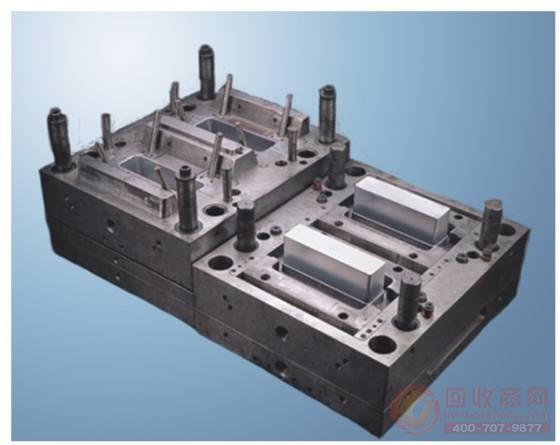
As the key tool for the production of molded products, the design and production cycle of the mold has become the decisive factor in determining the new product development cycle. The profile of the mold is generally a very complicated free-form surface, and the hardness is very high. The conventional processing method is to perform cutting after annealing, and then heat treatment, grinding or electric discharge machining, and finally manual grinding and polishing, and the processing cycle is very high. long. The manual processing accounts for a large part of the entire processing cycle of the mold. High-speed machining technology can meet the precision requirements of mold processing, reduce or even eliminate manual processing, and due to the emergence of new materials (such as PCBN, ceramics, cermets, coated tools, etc.), high-speed cutting can process hardness to HRC6O, Even harder workpiece materials can be used to machine hardened molds instead of EDM and grinding. Statistics show that by 1996, 44% of German mold companies are using high-speed cutting technology, while 59% of companies intend to invest in high-speed cutting technology. About 30% of mold companies in Japan and the United States have experience in high-speed cutting. Most companies believe that high-speed cutting is a very attractive technology for future mold processing.
The high-speed machining technology can be divided into two categories according to its purpose: processing for achieving maximum material removal per unit time and processing for achieving high-quality surface and detail structure. High-speed machining of molds is a combination of these two technologies. The high-speed machining technology has been introduced into the mold processing industry and is mainly used in the following three aspects: First, the direct processing of the hardened mold cavity. Using the characteristics of high-speed cutting to process hard materials, directly processing the hardened mold cavity, can improve the quality and efficiency of mold processing, can replace EDM; the second is EDM electrode processing. The application of high-speed cutting technology to machine electrodes has played a significant role in improving the efficiency of EDM. The high-speed cutting electrode improves the surface quality and precision of the electrode, reducing the subsequent processing steps; the third is the rapid sample manufacturing. The high-speed machining efficiency is used to process plastic and aluminum alloy models. The CaD design can quickly generate 3D solid models, which is more efficient and better than rapid prototyping technology.
Compared with the traditional processing methods of the mold, the advantages of high-speed machining of the mold are as follows:
(1) High-speed cutting processing has improved the speed of mold processing: from the material to the speed of removal, high-speed machining is four times faster than normal processing and even faster;
(2) High-speed machining can obtain high-quality machined surface: Due to the small feed rate and depth of cut during high-speed machining, high surface quality can be obtained, and sometimes the process of trimming the light can be saved. Therefore, due to the improvement of the surface quality, the elbow between the process of repairing light and electric spark is saved;
(3) Simplified processing: Traditional cutting can only be performed before quenching, and the deformation caused by quenching must be manually trimmed or finished by electric machining. High-speed machining saves electrode material. Electrode machining programming and machining, as well as all the costs of the electrical machining process, and there is no surface hardening of electrical machining. In addition, high-speed machining can use small-diameter tools to process smaller fillet radii and mold details, save some manual finishing process, reduce manual polishing time, and simplify the process to shorten the mold production cycle; (4) High-speed machining can also be easily used in the mold repair process: the mold often needs to be repaired several times to extend the service life. In the past, the repair of the mold was mainly done by electric machining, and the high-speed machining can complete the work faster. Work and use the original NC program without re-programming.
Indoor LED lights have become increasingly popular for their sustainability and superior performance. These lights are designed to provide exceptional illumination inside enclosed areas, and come in various types including indoor ceiling lights, indoor flood lights, sensor light indoor, led spotlights, and more. Whether you want to add a cozy ambiance to your home or enhance the aesthetic appeal of your office, indoor LED lights offer a perfect investment. They are energy efficient, cost-effective, and have a long lifespan, making them an ideal choice for anyone who values sustainability and quality. With indoor LED lights, you can light up your space with ease and enjoy the benefits of having a well-illuminated and inviting interior.
Indoor Ceiling Lights ,Indoor Flood Lights ,Sensor Light Indoor ,Led Spotlights Indoor led ,indoor lights
Ningbo Le Monde Import & Export Co., Ltd. , https://www.shineverlighting.com